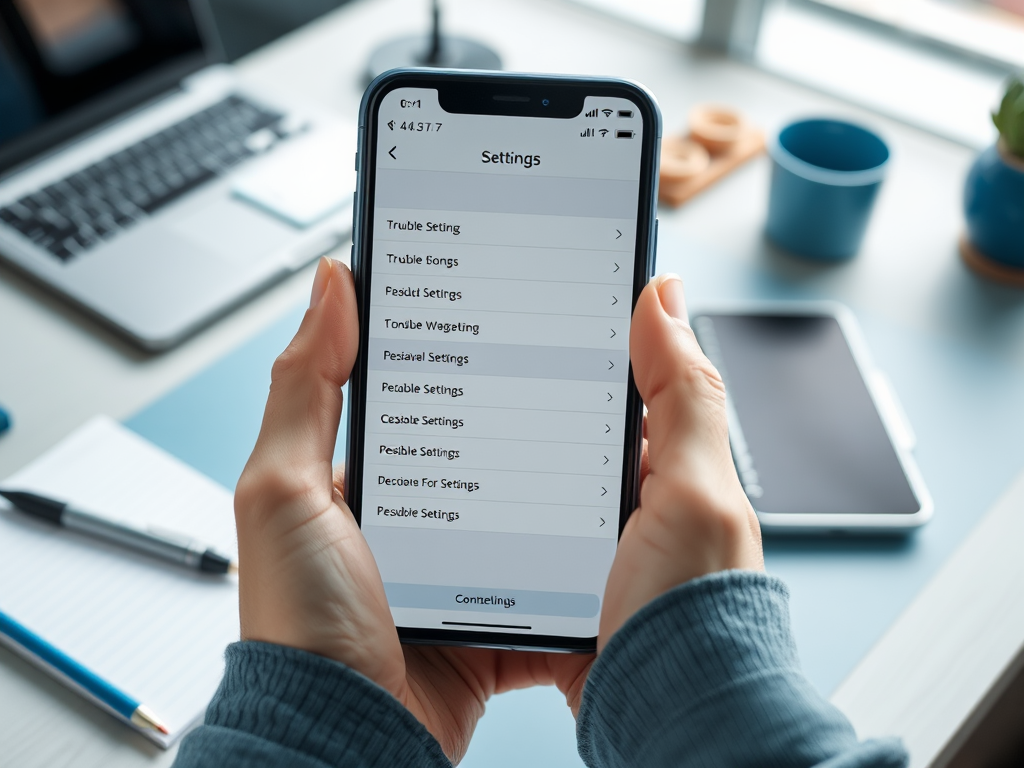In today’s fast-paced world, our smartphones are indispensable tools that bridge communication, entertainment, and information. When these devices, particularly the popular iPhone, experience problems, it can dramatically affect our daily routines. Users often find themselves frustrated as they realize their iPhones aren’t functioning correctly, leaving them wondering about the cause. Understanding the reasons behind these malfunctions is crucial, not just for immediate problem-solving but also for long-term device maintenance. This article will delve into the various factors contributing to iPhone issues and provide guidance on how to troubleshoot effectively. With the right knowledge, you can regain control over your device and ensure that it operates smoothly.
Understanding Current iPhone Issues

As of recent updates and changes in the tech landscape, many iPhone users have reported a range of issues that can hinder their device performance. Various problems, from slow responsiveness to connectivity issues, plague users. It is vital to recognize that not every malfunction stems from the device’s age or its internal hardware. Often, simple oversights or minor software glitches can lead to significant frustration. Understanding these current challenges not only helps users adapt but also empowers them with the information needed to resolve issues quickly. Equipped with knowledge about common issues, users can take proactive steps in maintaining their devices.
Common Reasons for iPhone Malfunctions

Software Glitches
Software glitches are a major reason for iPhone malfunctions. These issues may arise due to multiple factors, the most common being:
- Incompatible apps that have not been updated to work with the latest iOS version.
- Recent iOS updates containing unexpected bugs and glitches.
- Corrupted data from incomplete downloads or installations.
These software-related issues often lead to system slowdowns, app crashes, or complete freezes, which can be irritating for users who rely on their devices for efficiency. A significant aspect of addressing these problems involves updating the device’s operating system to the latest version. Regular updates not only enhance performance but also deploy critical security patches to keep your device safe. If you notice software-related symptoms manifesting, it’s advisable to back up your data and proceed with troubleshooting steps aimed at fixing these glitches.
Hardware Problems
While it is easy to blame software for most malfunctions, hardware problems can also be significant. Users should consider various hardware aspects that might be affecting performance, including:
- Battery degradation over time, commonly due to repeated charge cycles.
- Physical damage to the device from drops or exposure to water.
- Wear and tear of essential components like speakers or cameras, which can degrade performance.
Identifying hardware issues can sometimes be straightforward, like visible cracks or dents. However, internal problems are often more subtle. Therefore, performing regular checks and being mindful of how the device is handled can extend its lifespan. If necessary, users should seek professional help at authorized service centers whenever hardware concerns arise.
| Issue Type | Common Symptoms | Suggested Action |
|---|---|---|
| Software | Apps crash, slow performance | Update iOS, Reset settings |
| Hardware | Battery drains quickly, screen issues | Professional evaluation, Battery replacement |
| Connectivity | Poor signal, Wi-Fi issues | Network settings reset, Router check |
Quick Troubleshooting Steps
If your iPhone is misbehaving, don’t panic! There are several straightforward troubleshooting steps you can try before seeking professional help. Here’s a quick checklist to guide you:
- Restart the Device: This simple action can clear temporary glitches that may be causing issues.
- Check for Updates: Go to Settings and ensure you’re running the latest version of iOS.
- Reset Settings: Navigate to Settings > General > Reset > Reset All Settings, this can fix configuration-related problems without losing your data.
These basic steps can often resolve ongoing issues with minimal effort. It’s surprising how frequently a simple restart or ensuring your software is updated can make a world of difference. If problems persist after completing these steps, you may need to dig deeper into your device’s settings or consider professional assistance.
When to Seek Professional Help
Despite your best efforts at troubleshooting, there may come a time when seeking professional help is necessary. Signs that it might be time to go to a technician include:
- Persistent Issues: Problems that persist even after trying several troubleshooting methods.
- Physical Symptoms: Notable hardware damage such as cracks, dents, or liquid exposure are clear indicators.
- Battery Issues: If your battery percentage drops unexpectedly or doesn’t hold a charge, it may be time for replacement.
Addressing hardware issues quickly is paramount to avoid further complications and ensure your iPhone continues to operate effectively. Authorized repair centers or an Apple Store should be your go-to choices for reliable and thorough service.
Conclusion
In conclusion, understanding why iPhones encounter problems is essential for every user. From software glitches to potential hardware issues, a proactive approach can significantly reduce frustration levels. Knowing basic troubleshooting steps empowers users to address issues quickly and effectively. By recognizing the signs of trouble, whether minor or systemic, you can make informed decisions about when to repair or replace your device. Staying informed about common issues and solutions ensures your iPhone remains a reliable companion in your daily life.
Frequently Asked Questions
- Why is my iPhone not connecting to Wi-Fi?
This could be due to poor network conditions, incorrect settings, or a need for a software update. - What should I do if my iPhone won’t charge?
Check the charging cable and port for damage, and try a different charger or outlet. - How can I fix an unresponsive screen?
Attempt a force restart by pressing and holding the appropriate buttons for your model; if that fails, consider seeking repairs. - Why is my iPhone running slow?
A buildup of data, too many apps running in the background, or outdated software can cause slow performance. - Is there a way to reset my iPhone without losing data?
Yes, you can reset settings without erasing data by going to Settings > General > Reset > Reset All Settings.





